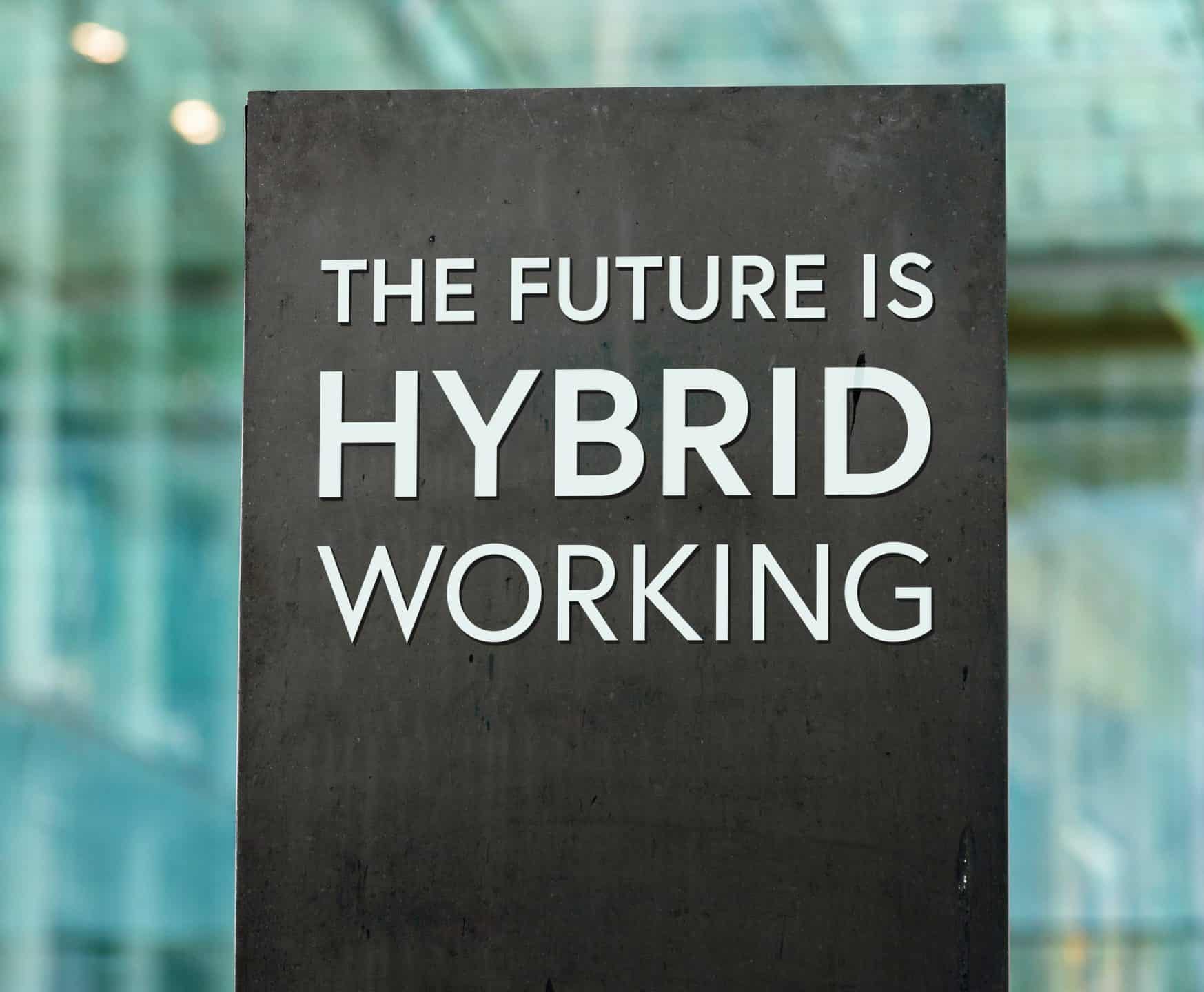
Early 2020 saw many organisations switch to fully remote working, almost overnight. For large numbers of digital leaders, this required a rapid response, to ensure their businesses had the tools they needed to continue operating in this new way.
Workers across countless industries, to their immense credit, quickly adapted to this fully remote model, and most organisations now have established sets of tools and processes to enable everyone to be productive when the whole team is distributed.
Hybrid working: A brand new (and even bigger) challenge
But as the world emerges from the pandemic, and in-person interactions become possible again, organisations face what’s arguably an even greater challenge than the switch to fully remote working.
Because while some businesses have stuck their necks out and said all staff must return to offices, the general trend appears to be towards a hybrid model. Some employees will be based in offices, some permanently remote, and others combining the two. This will represent uncharted waters for many. And it brings with it not-insignificant challenges.
For example, it will become increasingly common to have team meetings where some members are together in a conference room, and others dialled in remotely, perhaps from home or another office. Those in offices will benefit once more from all the technology and other facilities the organisation has invested in, as well as those chance ‘coffee machine’ encounters and the discussions they can lead to.
How do digital leaders ensure their hybrid workforces maintain or even enhance the feeling of being one team? How do they ensure all workers are happy, engaged and productive, wherever they are?
As part of our Digital Leaders series, we’ve put together a range of things forward-thinking organisations should be considering.
Ways to make hybrid teams happier, more engaged and more productive
Support the rollout of new technology
It’s important for organisations to understand that moving to a hybrid working model represents a new and fundamental shift that potentially requires lots of new supporting technology.
Many enterprises – understandably – tightly control the hardware and software their people can use. Securing approval for new kit and applications can be a long and complex process, due to the checks required. Digital leaders must empower and resource their IT and information security teams to support the assurance and rollout activities that need to happen. They also need to ensure there’s a can-do attitude when it comes to finding ways to help all employees be productive in the new hybrid world.
Freedom to choose hardware and software
This positive outlook is particularly important because the hardware and software required will differ from role to role, and even from person to person. A headset that one person finds comfortable won’t necessarily be what someone else will enjoy using. Some will prefer handwriting to typing, so may need graphics tablets to enable them to fully participate remotely in whiteboard/post-it note sessions. Someone working in a home office may need additional lighting, or a field worker may require a work phone or mobile broadband hotspot.
Rather than mandating certain kit, give individuals and teams the freedom to choose what they need.
Meetings and collaboration
Hybrid meetings, which combine remote workers and those co-located in meeting rooms, need particular attention. Organisations should be looking beyond simply asking someone to put their laptop at the front of the meeting room with the conference call on it – that experience will be poor for everyone.
Instead, make sure those conference rooms are set up for high-quality meetings. Good cameras, microphones and speakers are essential – and solutions such as the Meeting Owl can help focus attention on the individual who’s talking. Other options include ensuring those dialled in remotely can see a presenter and their supporting slideware simultaneously, and showing those joining remotely on large screens around the edge of a meeting room, rather than simply as thumbnails on a screen at the front.
Larger meetings combining in-person and remote attendees may also benefit from a dedicated moderator, to keep tabs on the meeting chat, and ensure those who’ve raised their hands or asked questions remotely are noticed.
Move core enterprise functions to the cloud, wherever possible
Many organisations will already be running some of their core enterprise functions in the cloud, using platforms such as Microsoft 365 or Google Workspace. Other areas, such as file storage, may still be on-premises. It’s advisable to migrate as many of these core business functions as possible, unless there are really compelling reasons not to.
Moving foundational technology to the cloud will typically bring down costs, reduce maintenance overheads, help ensure business continuity, and support truly global workforces and those working flexible hours.
Presence
One of the things many said they miss when working remotely, is the ability to wander over to someone’s desk to discuss something, instead of the more formal need to book a meeting.
To address this, remote video presence platforms offer a solution. Here, people can choose to have their webcams switched on while they work, but their microphones muted. This shows they’re at their desks, so that colleagues can choose their moment to approach them for an ad hoc face-to-face discussion.
Communication and company events
Lastly, good communication and an inclusive events programme are essential if you’re to ensure those working remotely feel an integral part of the organisation.
Make sure all-company meetings, which may now be held in person, are also delivered in a way that enables remote workers to both view and participate. Similarly, your company’s social events programme should cater both for those working remotely and those in offices. In both cases, you may want to offer to pay your remote workers’ travel expenses to attend, should they wish to.
Listen to feedback and continually strive to improve
As we touched on above, this switch to hybrid working will be new to many organisations. And with every business and individual having slightly different requirements, there’s no single model that will work across the board.
The best way forward is to talk to your people to find out what they need if they’re to be happy and productive – they know their roles and circumstances better than anyone, of course. And once you put measures to support your hybrid teams in place, review the situation periodically, particularly in the early days, to identify where you can further improve and refine the way you’re doing things.


